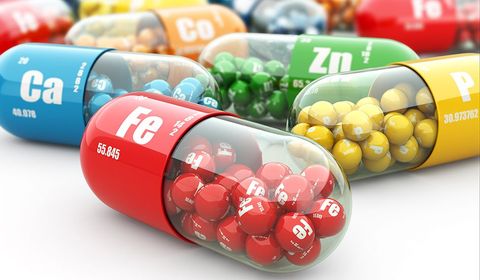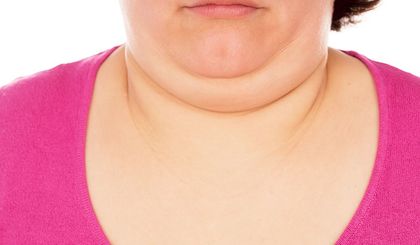Loneliness is known to cause depression and other mental woes. But a study published in the journal Perspectives on Psychological Science suggests that loneliness and social isolation also carry an increased risk of death.
The findings were based on a review of 70 studies involving more than 3.4 million people, average age 66 years, who were followed for about seven years.
The researchers looked at loneliness from three angles―subjective loneliness (those who felt lonely even though they were among people); objective loneliness (those who were socially isolated); and those who were living alone. All three aspects increased the risk of dying―by 26 per cent, 29 per cent and 32 per cent, respectively. The risk was more pronounced among those younger than 65 years, but similar among both genders.
“The key point that I hope others will get from this is the recognition that this is an important public health issue. Social isolation significantly predicts risk for premature mortality comparable to other well established risk factors. Thus, we need to take our social relationships as seriously for our health as we do these other factors,” said the lead author.
Family stories
Voices of loved ones recalling shared stories and events can awaken the unconscious brain of people in coma and speed recovery.
The study published in the journal Neurorehabilitation and Neural Repair included 12 men and 3 women who were in a vegetative or minimally conscious state following a motorcycle or car accident, bomb traumas or assaults.
The Familiar Auditory Sensory Training (FAST) began about 70 days after the injury for 8 patients. Family members recorded familiar stories.
“It could be a family wedding or a special road trip together... It had to be something they’d remember, and we needed to bring the stories to life with sensations, temperature and movement. Families would describe the air rushing past the patient as he rode in the Corvette with the top down or the cold air on his face as he skied down a mountain slope.”
The patients listened to the recordings played over headphones four times a day for six weeks. Patients who listened to the stories recovered consciousness significantly faster and had an improved recovery compared to patients who did not hear the stories.
“We believe hearing those stories in parents’ and siblings’ voices exercises the circuits in the brain responsible for long-term memories. That stimulation helped trigger the first glimmer of awareness,” said the lead author.
The brains of coma patients showed increased neural activity while they were in an MRI when they heard the voice of a family member. This was indicated by bright yellow and red blobs of light in regions involved with understanding language and long-term memory.
“We saw changes in the blood oxygen level in their brain regions associated with retrieving long-term memory and understanding language. That means they were using those regions of their brains.”
The FAST therapy also helps families of coma patients. “This gives them a sense of control over the patient’s recovery and the chance to be part of the treatment.”
Attack after heartbreak
Divorce is a messy business and a heart attack is the last thing people going through it want to face. A US study published in the journal Circulation: Cardiovascular Quality Outcomes suggests that people who divorce are more likely to suffer a heart attack and remarriage may not provide any protection, especially for women.

The findings were based on 15,827 men and women, aged 45 to 80, who had been married at least once. The participants were interviewed about their marital status and health every two years. About a third of the participants divorced at least once during the 18-year study period.
The risk was stronger among women; they were 24 per cent more likely to suffer a heart attack after a divorce. Women who had gone through multiple divorces had nearly twice the risk of heart attack. Remarriage did not appear to diffuse the risk. They still had a 35 per cent higher risk compared to women who stayed in their first marriage.
Compared with divorced women, divorced men fared better. Men's risk of heart attack rose (by 30 per cent) only after two or more divorces and once remarried the elevated risk disappeared.
“Divorce is a major life stressor that can have economic, emotional, and physical health consequences.” It would be advisable for women who go through divorces to focus more on their heart health.
Smell of a bite
You can blame the genes that control your body odour if mosquitoes like to feast on you.

For the British study published in the journal PLOS ONE, researchers sought to find out why some people get more mosquito bites than others.
The study included 18 pairs of identical twins and 19 pairs of non-identical twins. Mosquitoes were released into a Y-shaped tube. Each pair of twins placed their hand on either end of the tube. If the mosquitoes were attracted to the odour, they would fly towards it and if they disliked the odour, they would fly away from it.
Identical twins attracted similar number of mosquitoes than non-identical twins. Since identical twins share the same genes, they may have very similar body odour, suggesting that inherited body odour genes may influence whether mosquitoes like you or not.
The influence that genes have on whether a person's odour attracts mosquitoes or not is similar to the influence that genes have on our height and IQ.
"By investigating the genetic mechanism behind attractiveness to biting insects such as mosquitoes, we can move closer to using this knowledge for better ways of keeping us safe from bites and the diseases insects can spread through bites. In the future we may even be able to take a pill which will enhance the production of natural repellents by the body and ultimately replace skin lotions," the senior author added.
Did You Know
*Allergies and asthma are less common in children from families who wash dishes by hand instead of using a dish washer, lending support to the hygiene hypothesis that early exposure to a variety of microbes is essential for a healthy immune system *
Pediatrics
Baby pain
Do babies feel pain? Using MRI scans, researchers at Oxford University have shown that babies feel pain just like adults do.

The study involved 10 healthy infants aged 1 to 6 days old and 10 healthy adults aged 23-36 years.
Babies were placed in an MRI scanner where they usually fell asleep. Images of the babies' brains were taken as they were poked on the bottom of their feet with a special rod creating a sensation ‘like being poked with a pencil.’
The scans were compared to brain scans of adults exposed to the same pain stimulus. Eighteen of the 20 brain regions active in adults experiencing pain were also active in babies. The scans also showed that babies had the same response to a weaker poke as adults did to a stimulus four times as strong, suggesting that babies have a much lower pain threshold.
As recently as the 1980s, babies undergoing surgery were given neuromuscular blocks but no pain relief medication. A 2014 review of neonatal pain management in intensive care found that although these babies face an average of 11 painful procedures per day, 60 per cent do not receive any kind of pain medication.
“Babies can’t tell us about their experience of pain and it is difficult to infer pain from visual observations. In fact, some people have argued that babies’ brains are not developed enough for them to really ‘feel’ pain, any reaction being just a reflex―our study provides the first really strong evidence that this is not the case. If we would provide pain relief for an older child undergoing a procedure, then we should look at giving pain relief to an infant," the study author noted.
The findings were published in the journal eLife.
Asthma breakthrough
New hope for the 300 million asthma sufferers around the world: researchers at Cardiff University have identified the root cause of asthma along with a potential cure.
Using mouse models of asthma and human airway tissue from asthmatic and non-asthmatic people, the study, published in the journal Science Translational Medicine, identified the role of calcium sensing receptor (CaSR) in causing asthma.
The researchers found a link between airways inflammation, which can be triggered by environmental factors such as allergens, cigarette smoke and car fumes and airways twitchiness in allergic asthma.
"Our paper shows how these triggers release chemicals that activate CaSR in airway tissue and drive asthma symptoms like airway twitchiness, inflammation, and narrowing.”
Deactivating CaSR with an existing class of drugs known as calcilytics reversed all the symptoms of asthma that made breathing difficult. Calcilytics was originally developed for the treatment of osteoporosis, but proved to be unsuccessful.
"If we can prove that calcilytics are safe when administered directly to the lung in people, then in five years we could be in a position to treat patients and potentially stop asthma from happening in the first place," the lead researcher said.
The findings may also potentially lead to treatments for other inflammatory lung diseases including chronic obstructive pulmonary disease (COPD) and chronic bronchitis.
B and C natural
Dietary supplements are a billion-dollar industry. People pop vitamin and mineral supplements hoping to ward off diseases. But do they live up to the hype?

A study presented at the annual meeting of the American Association for Cancer Research suggests that excessive use of dietary supplements can actually increase the risk of certain cancers.
Studies have shown that cancer risk is lower among people who eat more fruits and vegetables. To see if taking multivitamins would further reduce cancer risk, researchers studied thousands of people who had been taking dietary supplements and placebos for ten years.
“We found that the supplements were actually not beneficial for their health. In fact, some people actually got more cancer while on the vitamins,” the lead researcher noted.
Taking more than the recommended dosage of beta-keratin supplements increased the risk for both lung cancer and heart disease by 20 per cent. While folic acid was considered to reduce the number of polyps in the colon, excess amounts increased the number of polyps which can lead to colon cancer. Too much vitamin E can increase the risk of prostate cancer in men.
“This is not to say that people need to be afraid of taking vitamins and minerals. If taken at the correct dosage, multivitamins can be good for you. But there is no substitute for good, nutritional food.”
Instead of taking multivitamins, we should try to eat a balanced diet rich in fruits and vegetables.
Melt your double chin
Could double chin be a thing of the past? The US FDA has approved a new injection called Kybella, which could melt away the fat that causes double chins.

The injection consists of deoxycholic acid, a natural compound found in our bodies that helps break down fat in our gut. Injected directly underneath the chin, it causes the fat cell to burst. The cells are destroyed permanently, eliminating the need for repeat procedures.
It is a non surgical procedure that takes just five minutes. A series of injections are administered four weeks apart. Side effects include swelling, bruising and numbness at the site of the injection and it mostly resolves on its own.
According to its maker, Kythera Biopharmaceuticals Inc., the drug has been studied in 19 clinical trials involving 2,600 patients and has been found to be very effective.
Did You Know
India ranks 117th of 158 countries in happiness, below Pakistan, China, Bangladesh and Iraq. Switzerland is the happiest country in the world followed by Iceland, Denmark, Norway and Canada
UN's 2015 World Happiness Report
Thank God for mother
The benefits of breastfeeding on babies' intelligence, brain development and ability to fight infectious diseases have been well established. A new study published in the journal The Lancet Global Health provides evidence that the positive effects of breastfeeding may well last into adulthood.

The study followed 3,493 infants born in Pelotas, Brazil, in 1982, for nearly 30 years. Children who were breastfed had higher IQ, more education and earned more in adulthood and the benefits increased the longer they were breastfed. Babies who were breastfed for a year earned about one third more as adults and scored nearly 4 points higher on IQ tests compared to those who were breastfed for less than a month.
"Our study provides the first evidence that prolonged breastfeeding not only increases intelligence until at least the age of 30 years but also has an impact both at an individual and societal level by improving educational attainment and earning ability. The results of our mediation analysis suggested that IQ was responsible for 72 per cent of the effect on income," the researchers added.
The researchers believe that the benefits can be attributed to the saturated fatty acids (DHAs) in breast milk, which play a crucial role in brain development. "Our finding that predominant breastfeeding is positively related to IQ in adulthood also suggests that the amount of milk consumed plays a role."
Eye care
Glaucoma affects nearly 80 million people worldwide and is a leading cause of vision loss and blindness. Glaucoma is a group of diseases that damage the optic nerve and open-angle glaucoma is the most common form of glaucoma.

In a healthy eye, fluid flows continuously in and out of the anterior chamber of the eye, the fluid filled space between the iris and the cornea. In open-angle glaucoma, the movement of the fluid is blocked or restricted. This causes pressure to build up inside the eye and eventually the optic nerve can be damaged, resulting in vision loss.
Glaucoma patients have to use multiple eye drops throughout the day to treat the condition.
The US Food and Drug Administration has approved a more permanent solution―iStent. The iStent Trabecular Micro-Bypass Stent System is the first device approved for use in combination with cataract surgery to reduce pressure inside the eye in patients with mild or moderate open-angle glaucoma and a cataract who are currently being treated with medication to reduce intraocular pressure. The implanted stent allows fluid to drain smoothly, decreasing intraocular pressure.
“The iStent is a new option that may be considered in the treatment of open-angle glaucoma in patients needing cataract extraction. This option may be considered earlier in the disease process than some other types of surgical glaucoma treatments,” said director of the Office of Device Evaluation at FDA’s Center for Devices and Radiological Health. The iStent is manufactured by Glaukos Corporation of Laguna Hills, California.
Did You Know
Eating a big breakfast and small dinner prevents blood sugar hikes and is a better option for optimal blood sugar management and prevention of cardiovascular events in people with type 2 diabetes
Diabetologia
Weight is what you eat
Can't lose weight in spite of sweating in the gym? Your sugar and carbs cravings may be to blame.

In an editorial published in the British Journal of Sports Medicine, Dr Aseem Malhotra and colleagues argue that the primary cause of obesity is bad diet and not lack of physical activity.
According to them, while physical activity reduces the risk of cardiovascular diseases, type 2 diabetes, dementia and certain cancers by at least 30 per cent, its impact on weight loss is questionable. Over the past 30 years, obesity has increased greatly even though there has been little change in the physical activity levels of the western population, suggesting that our unhealthy eating habits are to blame.
Obesity is not the only burden induced by poor diet. Our unhealthy food choices “generate more ill health than physical inactivity, alcohol, and smoking combined”. Up to 40 per cent of people in the normal weight range still harbour harmful metabolic abnormalities typically associated with obesity, which include hypertension, non alcoholic fatty liver disease and cardiovascular disease.
It's not just the calories, but the source of the calories is also crucial. For every extra 150 calories of sugar (in one can of soda) there was an 11-fold increase in the prevalence of type 2 diabetes, compared to 150 calories obtained from fat or protein. While sugar calories promote fat storage and hunger, fat calories induce fullness or satiation.
The article blames the food industry for misleading the public and trying to associate sugary drinks and other junk food with sports. They promote the idea that people can eat whatever they want as long as they exercise.
“Let us bust the myth of physical inactivity and obesity. You cannot outrun a bad diet," the researchers concluded.
Contributor: SHYLA JOVITHA ABRAHAM





